|
A case of polymelia with a rudimentary wing is described in an eight-week-old Nera black chicken (Gallus domesticus). It is a rare disorder with chromosomal aberrations, which are associated with congenital limb malformations. The condition was observed during routine physical examination of a flock of 2000 poultry birds in the month of February 2008 in Ibadan, Nigeria. After physical examination, the bird was found to have two extra well-developed legs, which were shorter than the normal legs. These extra legs were also found to be non-functional. Similarly, a rudimentary wing, which was highly vestigial, was found on the left lateral side of the bird very close to the cloaca. The bird died at the age of eight weeks. This is the first reported case of polymelia with a rudimentary wing in a domestic chicken in Nigeria.
A congenital abnormality can be described as a defect or defects in and/or damage to a developing foetus. It may be multiple or may affect single parts of organ systems. Multiple congenital abnormalities often occur because the malformation of one part of the body has been found to directly lead to the malformation of another part (Camon et al. 1990). These anomalies have been reported to be associated with genetic factors (trans-genes, chromosomes), environmental agents (infections, toxins, teratogens, fertilization techniques, management) or a combination of factors (Keeler et al. 1981; Newman et al. 1999). The aetiology of limb malformation includes hereditary factors, environmental factors, or a combination of both. In humans, some limb anomalies are inherited and the genes responsible for these anomalies have been identified (Manouvrier-Hanu, Holder-Espinasse & Lyonnet 1999; Tickle 2002). There have also been reports indicating that chromosomal aberrations are associated with congenital limb malformations (Morey & Higgins 1990; Packard 1999). Supernumerary ectopic limb(s) (SEL) is a congenital anomaly that is defined as the presence of accessory limb(s) attached to the various body regions (Fourie 1990; Hiraga et al. 1989). These accessory limbs have been reported to be always smaller than normal limbs, with stiff joints and sparse muscles without innervations (Pohlmeyer 1974). Cases of polymelia have also been found in calves, ewes, goats, poultry and in humans, but they are extremely rare in swine (Hiraga 1993; Hoffmann 1968; Ramadan, Abdin-Bey & Al-Holaibi 1998; Rivera et al. 2005; Schönfelder, Wittek & Sobiraj 2003). Only one case of polymelia in a piglet has been described. True polymelia is also rare in avian species, but a classical case with two extra hind limbs has been reported in a seven-week-old slaughterhouse broiler chicken (Anderson, Langheinrich & Mccaske 1985). A number of different congenital abnormalities are known to occur in domestic animals (Newman et al. 1999; Noh et al. 2003), with the limbs most commonly affected, especially the distal parts (Leipold & Dennis 1987). For example, polymelia, which was coupled with alterations in the organogenesis of most types of tissues in the distal part of the limb, has been observed in polydactyl or Hemingway cats (Vetstreet 2013) and Pyrenean mountain dogs, although, this has not been documented in any scientific publication. In cattle, only cases of hemimelia (the absence of a portion of a limb) and deformities of hind limbs have recently been reported (Lapointe et al. 2000; Vermun, Burbidge & Thompson 2000). To our knowledge, there has been no report on this deformity in domestic animals in Nigeria, especially in poultry.
Case description
The pullet was identified at one week of age in a commercial flock containing about 2000 pullets of the Nera black strain in a commercial poultry farm in Ibadan, Nigeria. It was isolated from the flock at four weeks of age and fed separately until the bird died at eight weeks of age.
Clinical examination
Physical examination of the bird revealed two well-developed extra hind limbs, consisting of the femur, tibiofibula and the phalanges, which were attached to the coccygeal area of the bird. Attached with these limbs on the left lateral side was a wing, which was made up of the carpus up to the humeral bone. The wing was very close to the cloaca. The supernumerary limbs were smaller than the normal appendages, but contained an equal number of digits, although the appendages were non-functional (see Figure 1 and Figure 2).
 |
FIGURE 1: Polymelia in an eight-week-old Nera black chicken, seen from the right side.
|
|
 |
FIGURE 2: Polymelia in an eight-week-old Nera black chicken, seen from the left side.
|
|
During the period of isolation and examination, ethical regulations were followed in accordance with National and Institutional guidelines for the protection of animals’ welfare during experiments (Public Health System [PHS] 1996).
Polymelia is the duplication of a whole limb, but when additional limbs are attached to the pelvic region, it is called pygomelia, which is a frequently occurring congenital malformation. Different types of congenital defects occur in avian species, but polymelia is comparatively rare when coupled with rudimentary wings. The present study was reported to be a most interesting clinical case as it draws the attention of farmers in the poultry industry to congenital diseases that can affect poultry production.
In conclusion, the combination of malformations as described in the present paper is a very rare case of polymelia in a chicken involving two hind limbs and a rudimentary wing. This was probably caused by a chromosomal anomaly that has not been reported before in Nigeria. Although a rare occurrence, subsequent identified cases of polymelia should be further investigated using X-ray, ultrasonography and other diagnostic imaging techniques.
Competing interests
The authors declare that they have no financial or personal relationship(s) that may have inappropriately influenced them in writing this article.
Authors’ contributions
O.I.A. (University of Ibadan) identified the bird amongst the flock and reared it until its final death at eight weeks of age. A.A.O. (University of Ibadan) did the literature search and write-up of the manuscript. Both authors contributed to the final proofreading and correction of the manuscript.
Anderson, W.I., Langheinrich, K.A. & Mccaske, P.C., 1985, ‘Polymelia in a broiler chicken’, Avian Disease 29, 244–245.
http://dx.doi.org/10.2307/1590713,
PMid:3985878Camon, J., Sabate, D., Franch, J., Lopez-Bejar, Ma., Pastor, J., Rutllant, J. et al. 1990, ‘Associated multiple congenital malformations in domestic animals: Contribution of four cases’, Zentralblatt fur Veterinarmedizin, Reihe A 37, 659–668.
http://dx.doi.org/10.1111/j.1439-0442.1990.tb00959.x,
PMid:2127971 Fourie, S.L., 1990, ‘Congenital supernumerary ectopic limbs in a Brahman-cross calf’, Journal of South African Veterinary Association 61, 68–70.
PMid:2286989 Hiraga, T., Abe, M., Iwasa, K., Takehana, K. & Tetsuka, M., 1989, ‘Seven-legged calf–dipygus with an extra fore leg at the pelvic region’, Nippon Kagaku Zasshi 51, 1011–1015.
http://dx.doi.org/10.1292/jvms1939.51.1011 Hiraga, T. & Dennis, S., 1993, ‘Congenital duplication’, Veterinary Clinic of North America, Food Animal Practice 9, 145–161.
PMid:8457924 Hoffmann, J., 1968, ‘Doppelmissbildungen (Polymelie und Anus duplex) bei einem Hühnerküken [Double malformations (Polymelia and anus duplex) in a Chicken]’, Dtsch. Tierärztl Wschr 68, 512–514. Keeler, R.F., Shupe, J.L., Crowe, M.W., Olson, A. & Balls, L.D., 1981, ‘Nicotiana glauca-induced congenital deformities in calves: Clinical and pathologic aspects’, American Journal of Veterinary Research 42, 1231–1234.
PMid:7271044 Lapointe, J.M., Lachance, S. & Steffen, D.J., 2000, ‘Tibial hemimelia, meningocele and abdominal hernia in Shorton Cattle’, Veterinary Pathology 37, 508–511.
http://dx.doi.org/10.1354/vp.37-5-508,
PMid:11055885 Leipold, H.W. & Dennis, S.M., 1987, ‘Cause, nature, effect and diagnosis of bovine congenital defects’, Irish Veterinary News 9, 11–19. Manouvrier-Hanu, S., Holder-Espinasse, M. & Lyonnet, S., 1999, ‘Genetics of limb anomalies in humans’, Trends in Genetics 15, 409–417.
http://dx.doi.org/10.1016/S0168-9525(99)01823-5 Morey, M.A. & Higgins, R.R., 1990, ‘Ectro-amelia syndrome associated with an interstitial deletion of 7q’, American Journal of Medical Genetics 35, 95–99.
http://dx.doi.org/10.1002/ajmg.1320350118,
PMid:2301476 Newman, S.J., Bailey, T.l., Jones, J.C., Digrassie, W.A. & Whittier, W.D., 1999, ‘Multiple congenital anomalies in a calf’, Journal of Veterinary Diagnostic Investigation 11, 368–371.
http://dx.doi.org/10.1177/104063879901100414,
PMid:10424656 Noh, D.H., Jeong, W.I., Lee, C.S., Jung, C.Y., Chung, J.Y., Jee, Y.H. et al. 2003, ‘Multiple Congenital Malformation in a Holstein calf’, Journal of Comparative Pathology 129, 313–315.
http://dx.doi.org/10.1016/S0021-9975(03)00044-6 Packard, D., 1999, ‘Anatomy of a duplicated human foot; a limb with fibular dimelia’, Teratol 60, 272–282.
http://dx.doi.org/10.1002/(SICI)1096-9926(199911)60:5<272::AID-TERA8>3.0.CO;2-E PHS (Public Health Service) 1996, Public health service policy on humane care and the use of laboratory animals, US Department of Health and Humane services, Washington, DC, pp. 99–158. Pohlmeyer, K., 1974, ‘Notomelie beim Kalb. Dtsch [Notomelia in a calf]’, Tierärztl Wschr 82,190–195. Ramadan, R., Abdin-Bey, M. & Al-Holaibi, A., 1998, ‘Notomelia in goats and calves’, Pakistan Veterinary Journal 18, 47–49. Rivera, R., Hootnick, D., Gingold, A., Levinsohn, E., KrugerI, l., Talamillo, A. et al. 2005, ‘The developing limb and the control of the number of digits’, Clinical Genetics 67, 143–153.
http://dx.doi.org/10.1111/j.1399-0004.2005.00404.x,
PMid:15679824 Schönfelder, A., Wittek, T. & Sobiraj, A., 2003, ‘Die Polymelie beim Kalb Übersicht mit Fallbeschreibung zur operativen Behandlung [The overview of Polymelia in a calf with case description for the surgical treatment]’, Tierärztl Prax 31, 294–355. Tickle, C., 2002, ‘Molecular basis of vertebrate limb patterning’, American Journal of Medical Genetics 112, 250–255.
http://dx.doi.org/10.1002/ajmg.10774,
PMid:12357468 Vermun, J.J., Burbidge, H.M. & Thompson, K.G., 2000, ‘Unusual congenital deformities of the lower limb in two calves’, New Zealand Veterinary Journal 48, 192–199.
http://dx.doi.org/10.1080/00480169.2000.36192,
PMid:16032152 Vetstreet: Your Pet, Your Vet, 2013, Polydactyl cats: The felines with extra toes, viewed 02 Aug 2013 from
http://www.vetstreet.com/our-pet-experts/polydactyl-cats-the-felines-with-extra-toes
|